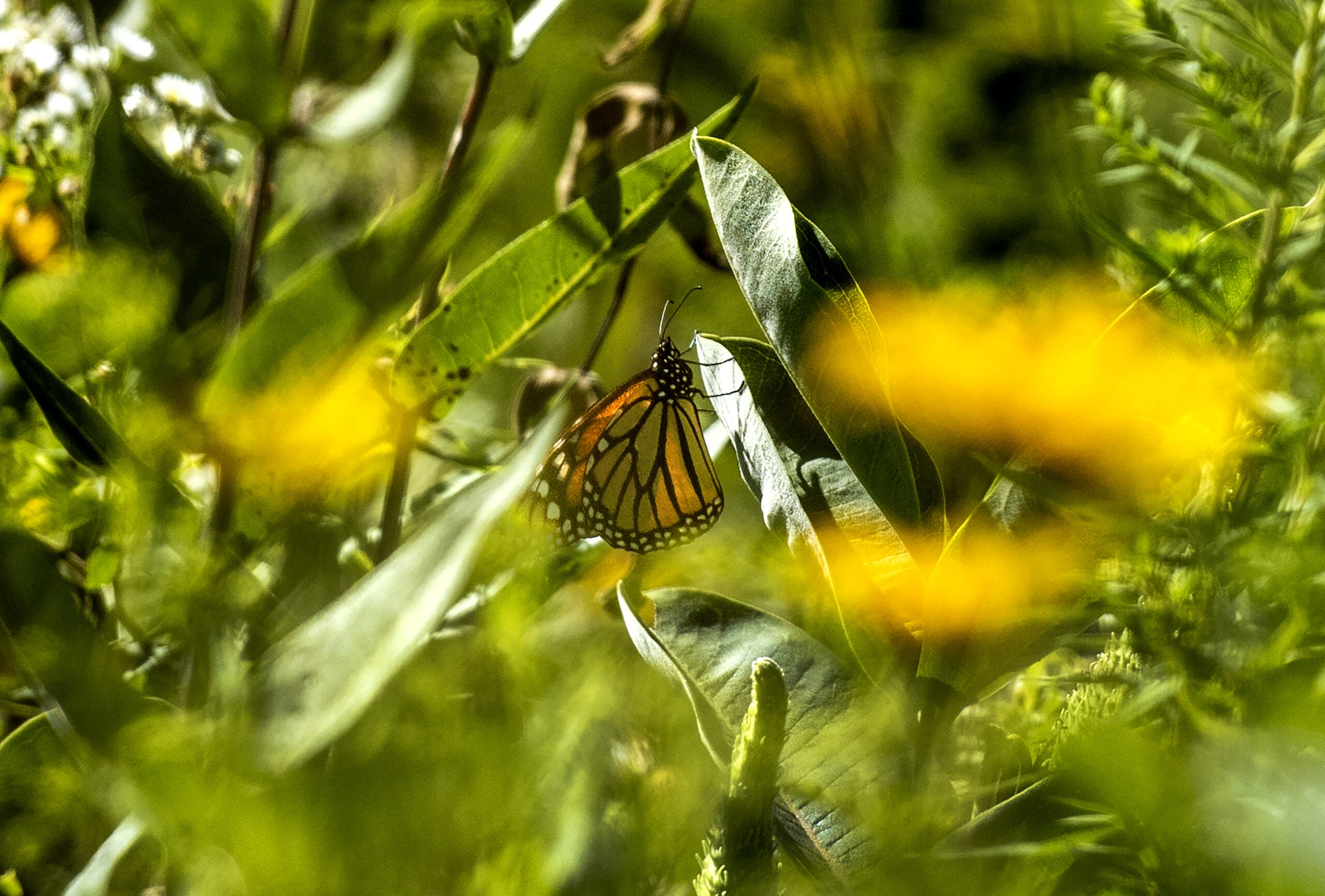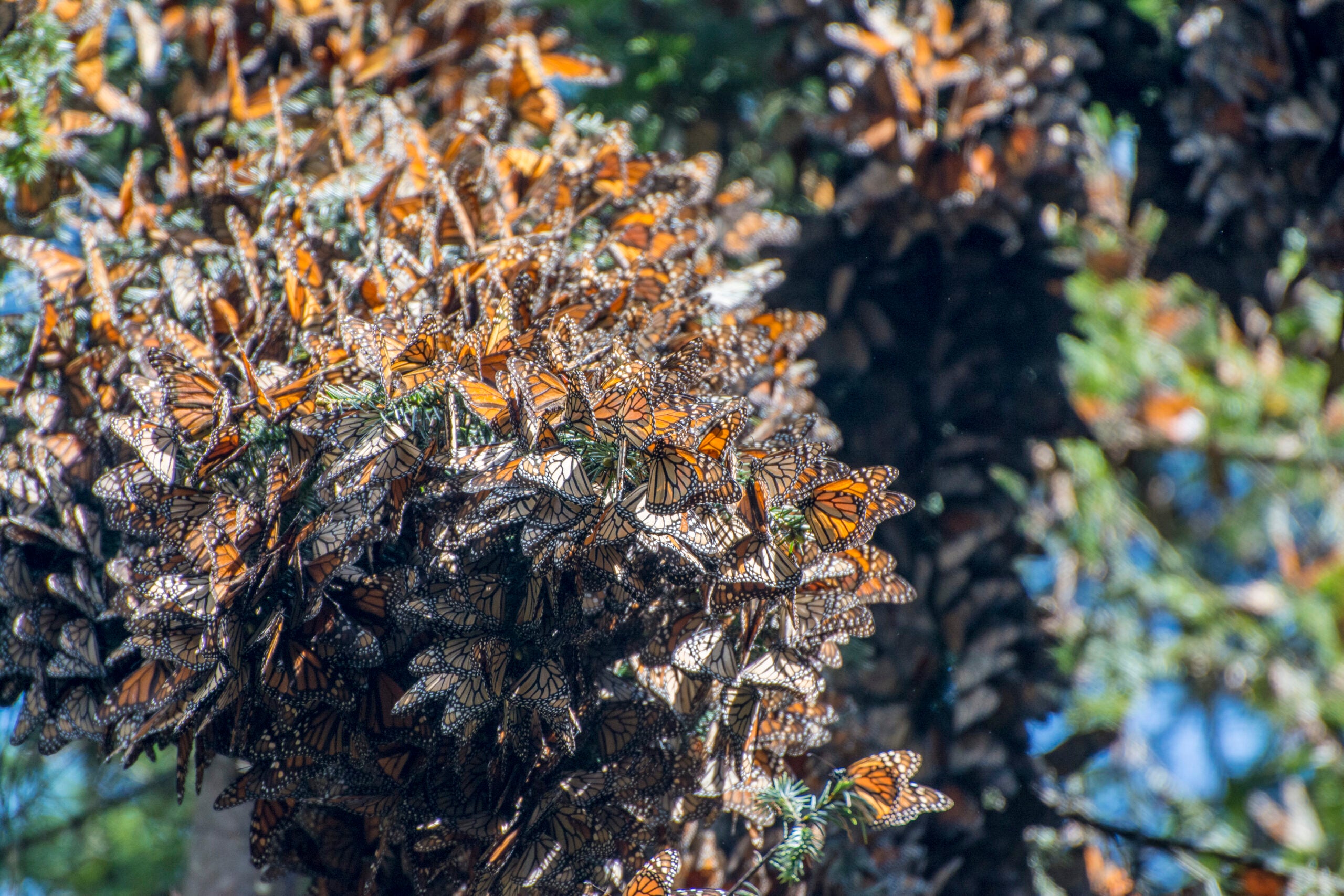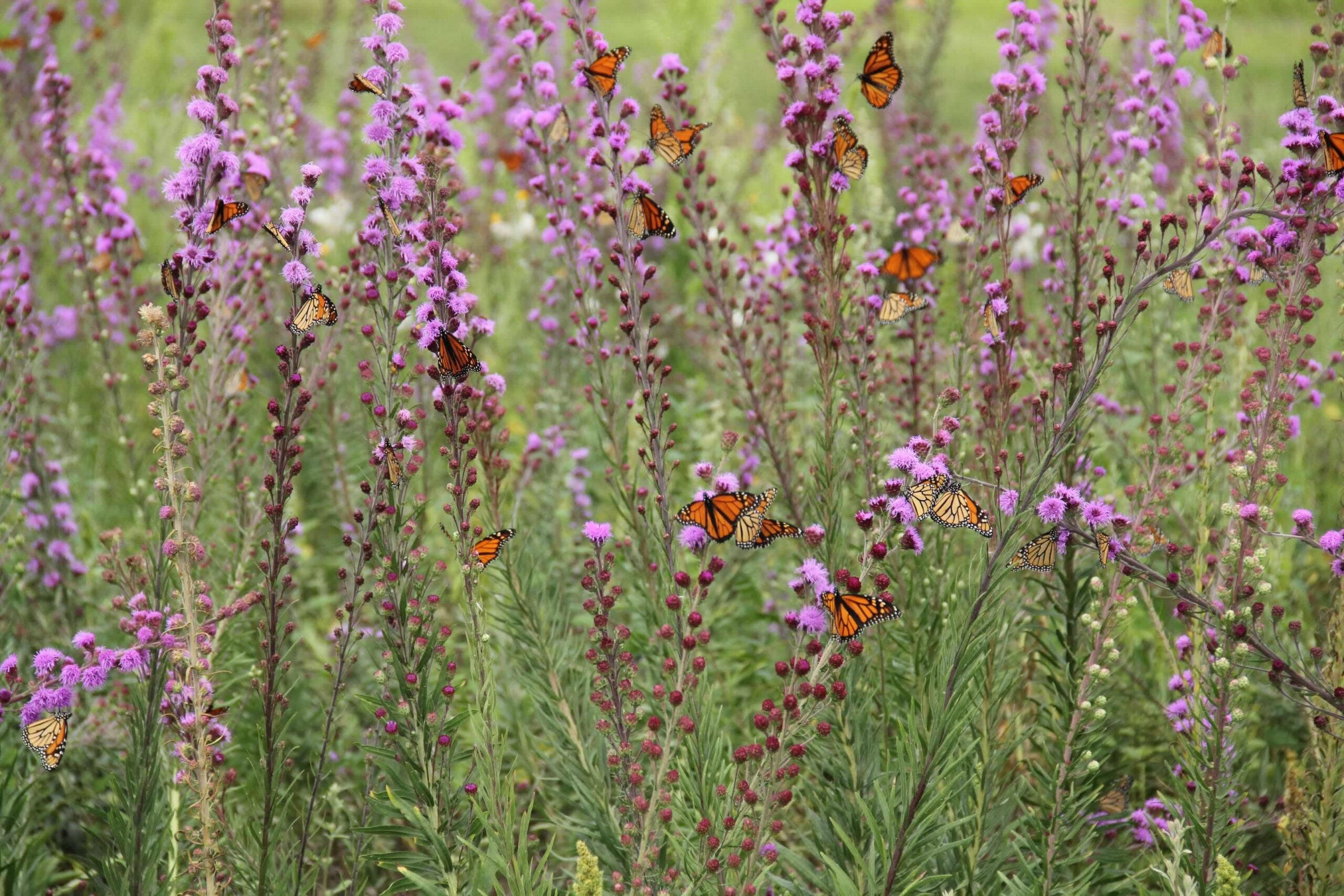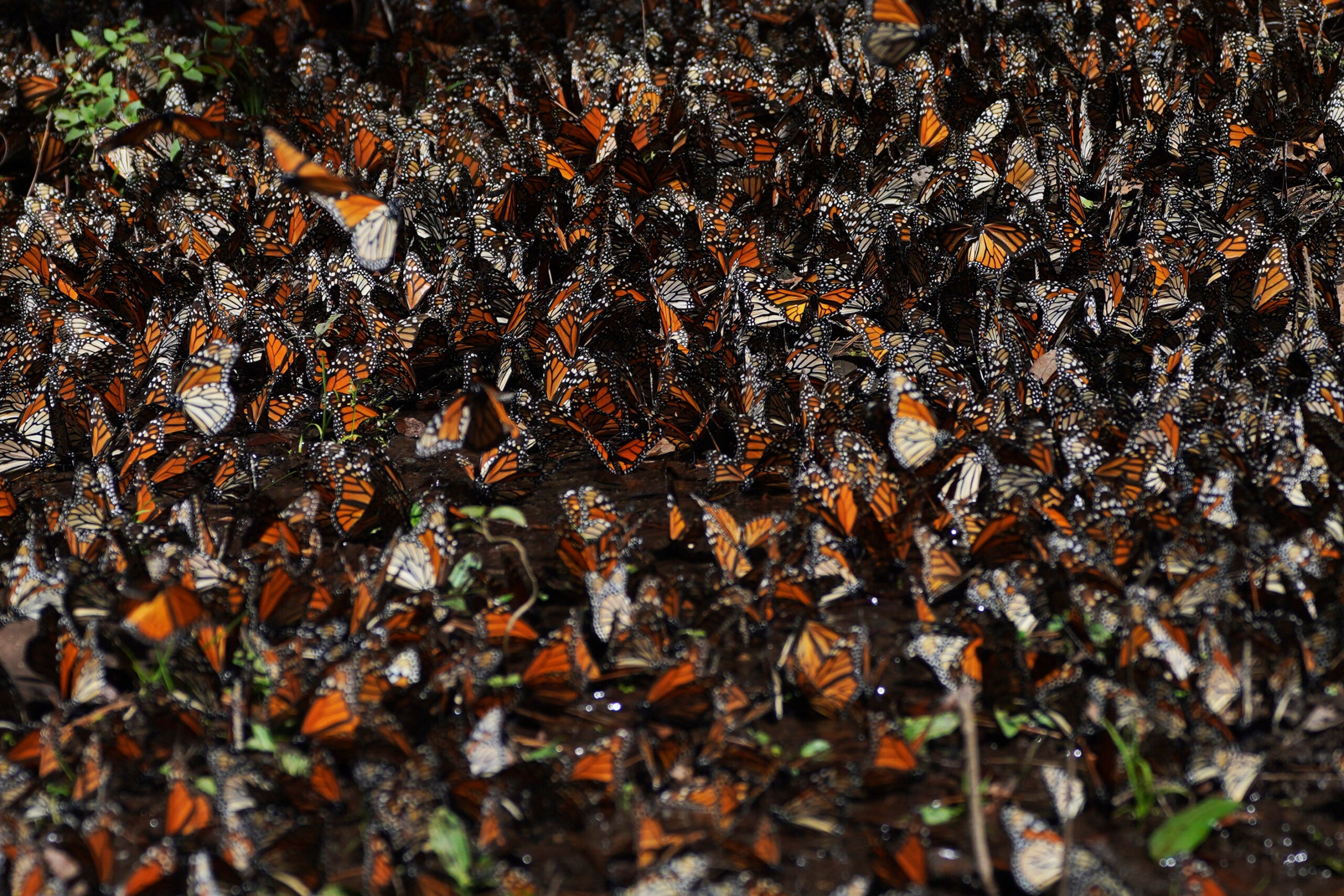For many Wisconsinites, monarchs are a symbol of summer. But this year, residents have said the butterflies and caterpillars have been harder to spot.
The International Union for the Conservation of Nature, or IUCN, added the migrating monarch butterfly to its list of endangered species on July 21, solidifying why people have reported seeing fewer monarch caterpillars on milkweed.
In an effort to support these butterflies — and all pollinators — groups throughout Wisconsin are creating habitats and educating residents on how they can help.
Stay informed on the latest news
Sign up for WPR’s email newsletter.
“Making the world better for monarchs is going to bring a lot of other species along for the ride,” said Karen Oberhauser, director of the University of Wisconsin-Madison Arboretum.
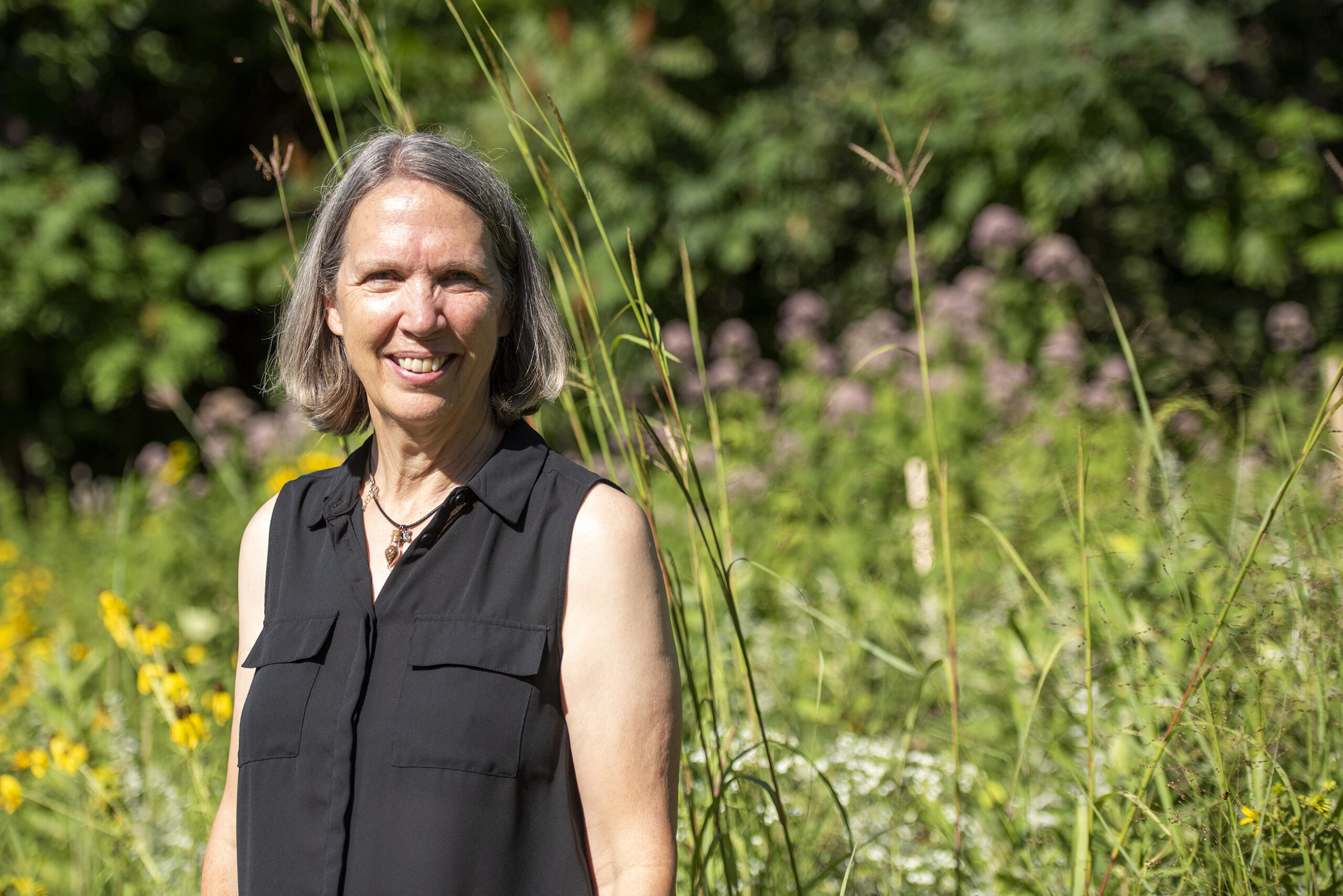
Oberhauser was a part of the IUCN team that added monarchs to its “Red List,” which highlights how organisms are threatened and what actions can prevent their extinction. The team said habitat loss and climate change are the two main factors affecting the population of monarchs.
While the IUCN’s assessment labels monarchs as endangered, the U.S. Fish and Wildlife Service hasn’t yet added the butterflies to the endangered species list. The organization said in 2020, monarchs met the criteria to be listed under the act, but there were other species at greater risk of extinction.
Oberhauser said the UW Arboretum has 1,200 acres of habitat in Madison, and 500 acres in outlying areas, to support a variety of species, including monarchs. The Arboretum also conducts research on best management practices for native areas and hosts nature walks and classes for families and residents to engage in.
“All of those activities are building connections between people and organisms and people and the land,” Oberhauser said.
Every summer, monarchs travel north to Wisconsin where they lay their eggs and create generations of butterflies that will migrate south in the fall. This is why organizations throughout Wisconsin are making it their mission to educate people about the importance of pollinators and set aside land for these species.
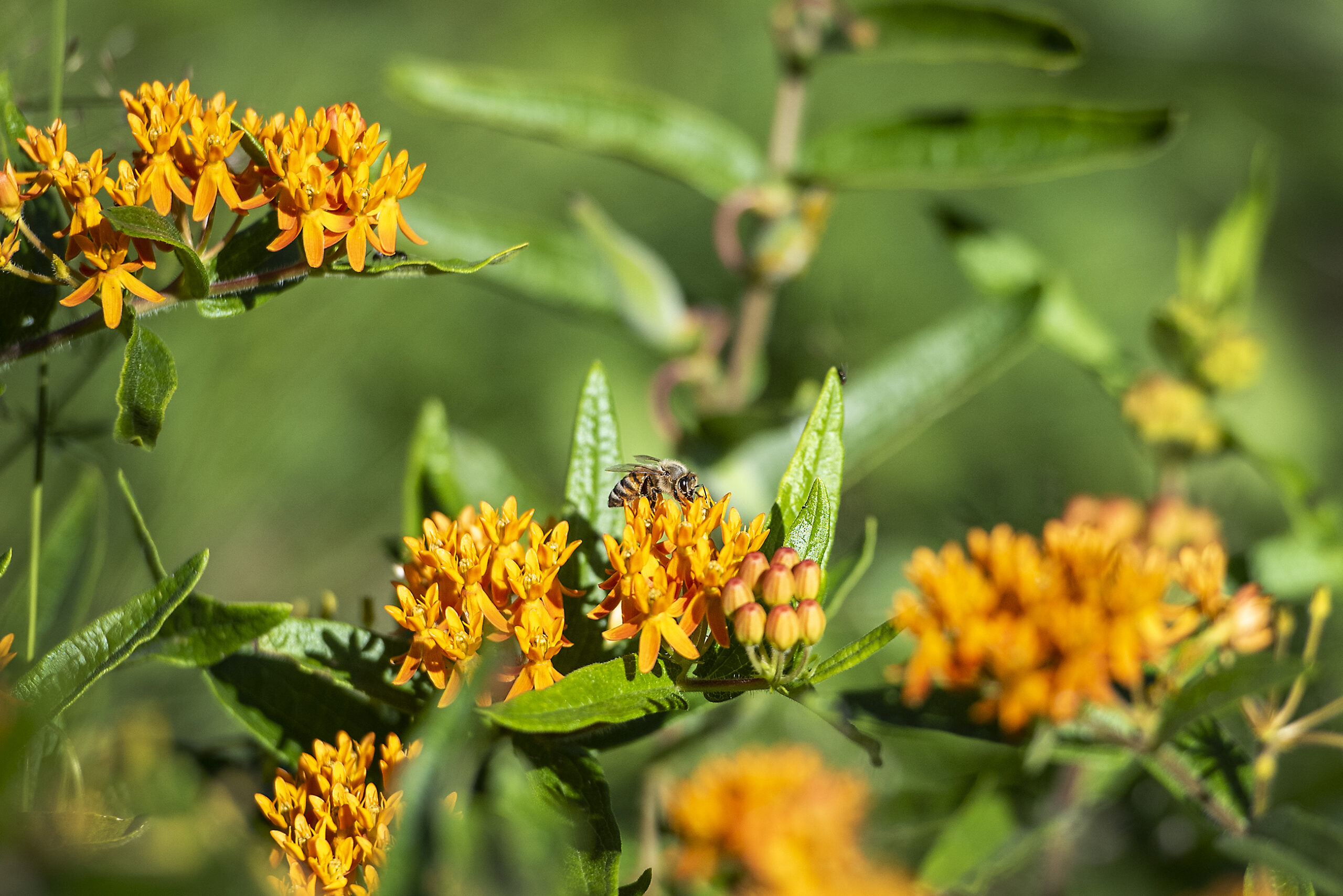
At the Green Bay Botanical Garden, staff have been planting milkweed throughout the landscape, as these are the only plants monarchs lay their eggs on. Linda Gustke, director of education and guest experience at the Garden, said they will be planting milkweed in their expansion of the Children’s Garden, as well as other areas they restore.
“Last fall, we were removing invasive cattails around one of our retention ponds and our horticulture team planted around 1,800 native emergent wetland plants, including milkweed,” Gustke said.
The Garden also is displaying an exhibit until next spring called “Habitat,” developed by Smithsonian Gardens. Structures of mushrooms, bees, monarchs and other organisms are displayed throughout the Garden as a way to connect with and educate visitors about the need for habitats and how they can be protected.
The Wild Ones Fox Valley Area Chapter also encourages residents to incorporate native plants into their landscaping practices.
Shannon Davis-Foust, president of the organization, said people can help monarchs and all pollinators by limiting the use of chemicals in their lawn care routines. Some plants people consider weeds can be “an important source of food and habitat” for creatures, she said.
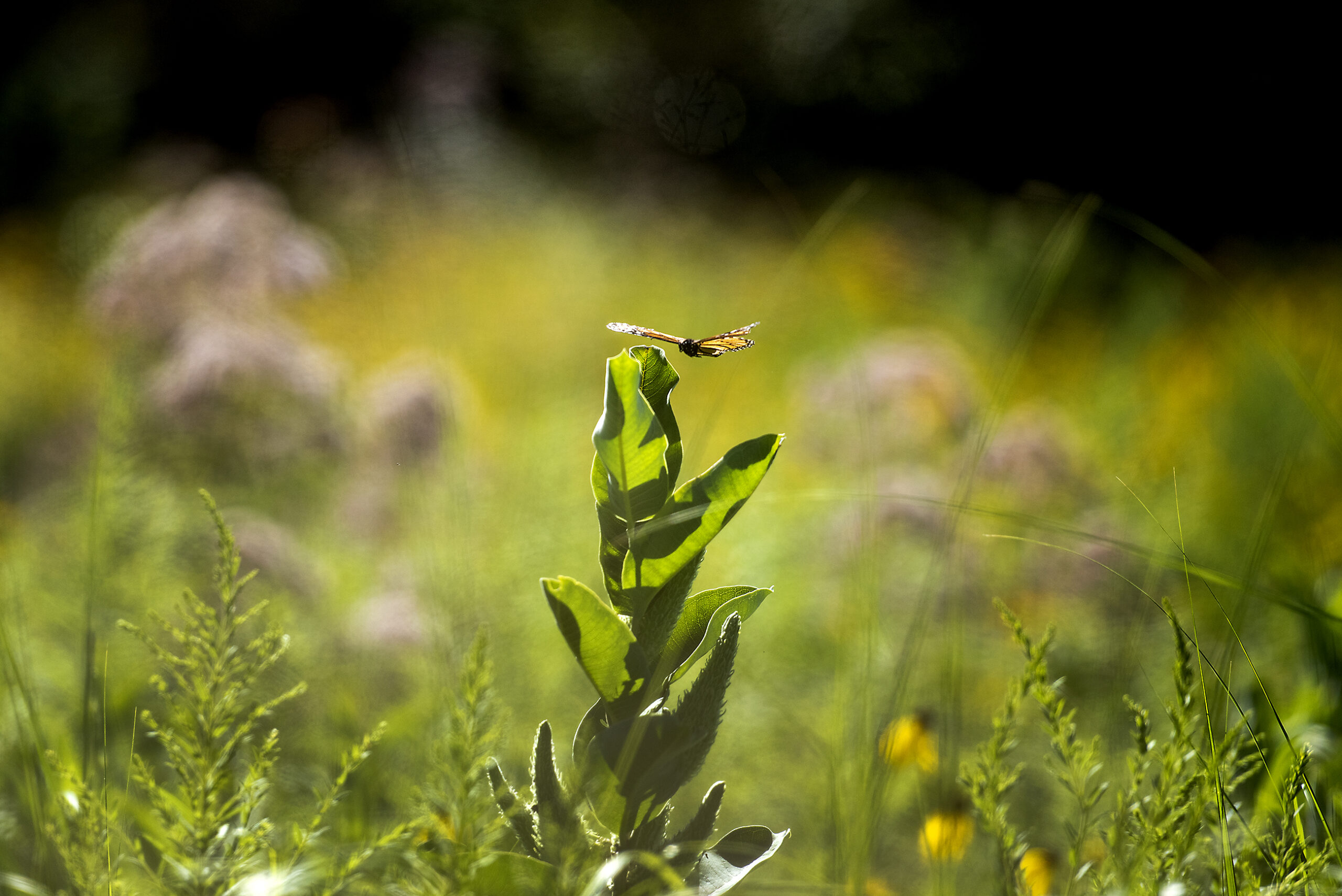
Donald Maum, sustainability manager at Alsum Farms, Inc., said farmers should set aside land for pollinators by not mowing areas on the outskirts of fields and reducing the toxicity of the chemicals they use.
Alsum Farms has over 50 acres of restored prairies and pollinator habitat, but Maum said farmers can make a significant impact even with much smaller patches of land.
“Eighty percent of the world’s food supplies depend on pollinators,” Maum said. “It’s important to give back.”
It can be easier to think of concrete solutions for monarch habitat loss, but Oberhauser said climate change — the second factor affecting monarch populations — is also vital to consider.
Oberhauser said doing what we can to mitigate climate change will help support the monarch population and many other species.
Wisconsin Public Radio, © Copyright 2025, Board of Regents of the University of Wisconsin System and Wisconsin Educational Communications Board.
